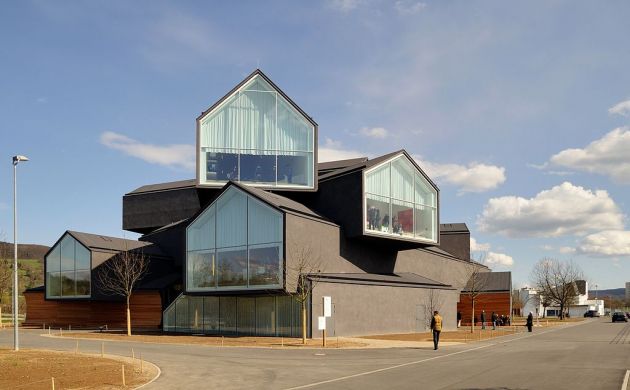 Tate Extension by Herzog & de Meuron. Photo by Iwan Baan
Tate Extension by Herzog & de Meuron. Photo by Iwan Baan
Swiss architecture studio Herzog & de Meuron have become well known for its daring approach to architecture. Here are five of the firm’s most recogniseable buildings
Founded by childhood friends Jacques Herzog and Pierre de Meuron, Herzog & de Meuron have offices in Basel, London, Munich and San Francisco. From Olympic stadium to art galleries and artist collaborations, the two architects have undertaken diverse public buildings and have become known for their creative flare with form and material, as well as the juxtaposition of old and new styles. Here’s a look at five of their buildings.

The Beijing National Stadium
Known as the Bird’s Nest, Herzog & de Meuron designed the 2008 Beijing Olympic National Stadium in collaboration with artist Ai Weiwei. The distinctive structure features a random web of steel beams around its exterior. The Bird’s Nest is scheduled to be used again in the 2022 Winter Olympics, making it the first stadium to host both Summer and Winter Olympic opening ceremonies.
The designers collaborated with Ai Weiwei a second time on the 2012 pavilion for the Serpentine Gallery in London. The pavilion was sunk into the ground and featured a roof with a reflective pool and subterranean spaces.
 Prada Flagship Store by Herzog de Meuron. Image by Wiiii via Wikimedia
Prada Flagship Store by Herzog de Meuron. Image by Wiiii via Wikimedia
Prada Flagship Store, Tokyo
Situated in the Aoyama district of Tokyo, the Prada flagship store features crosshatched exteriors with diamond-shaped panes of concave, convex and flat panels of glass. The facade allows natural light to flood the store, while also allowing for views of the brand’s luxury goods from the street.
 Tate Extension by Herzog & de Meuron. Photo by Iwan Baan
Tate Extension by Herzog & de Meuron. Photo by Iwan Baan
Tate Modern and extension, London
When Jacques Herzog and Pierre de Meuron won an international competition to renovate the Bankside power station into a gallery for modern art they were relatively unknown. The Tate Modern and its vast Turbine Hall opened in 2000 and the studio was commissioned again 15 years later to compete the Tate extension, named Blavantnik Building. The original refurbishment retained the shape of the original power station structure, transforming its industrial spaces into galleries for contemporary art collections and installations. The Tate is the UK’s third most visited attraction, and the most visited gallery for modern and contemporary art in the world.
 Vitrahaus by Herzog de Meuron. Photo by Wladyslaw via Wikimedia
Vitrahaus by Herzog de Meuron. Photo by Wladyslaw via Wikimedia
VitraHaus, Weil am Rhein
VitraHaus forms part of Swiss company’s Vitra Design Museum in Germany, and sits alongside buildings designed by Zaha Hadid, Buckminster Fuller and Frank Gehry. It was designed to house the brand’s home collection and takes the form of a stack of houses clad in dark grey stucco with glass ends.
Read more about VitraHaus by Herzog & de Meuron
 Laban Dance Centre by Herzog de Meuron. Photo by Margherita Spiluttini
Laban Dance Centre by Herzog de Meuron. Photo by Margherita Spiluttini
Laban Dance Centre, London
The Laban Dance Centre in London is the largest contemporary dance school in the world. Completed in 2003, the centre is clad with glass and translucent polycarbonate panels in various shades of lime, turquoise and magenta. The idea behind these pale coloured semi-see-through exteriors was to allow the silhouettes of dancers to be seen from the outside without compromising privacy.
The centre comprises 13 dance studios. The interior of the dance centre was designed to mimic urban landscapes and features internal courtyards that provide social spaces as well as interior ‘streets.
















